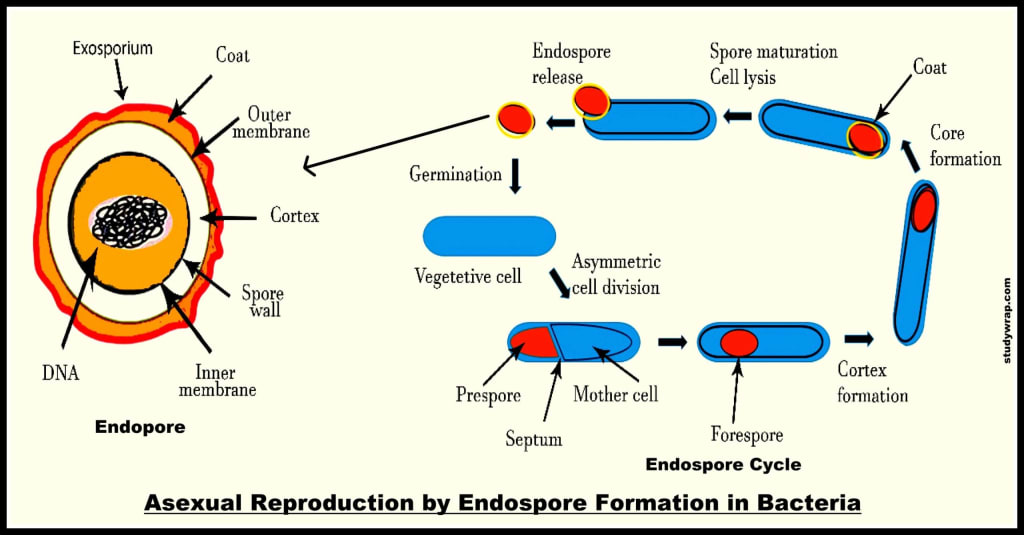How Do Bacteria Reproduce: A Comprehensive Guide
Unraveling the Mysteries of Bacterial Reproduction: Insights into Growth, Factors, and Control

Introduction
Bacteria, often referred to as the smallest living organisms, are remarkable in their ability to reproduce and multiply rapidly. Understanding the process of bacterial reproduction is crucial for scientists, medical professionals, and the general public alike. In this article, we will delve deep into the topic of how bacteria reproduce, exploring the various mechanisms and factors involved. So, let's embark on this journey of discovery and gain insights into the fascinating world of bacterial reproduction.
How Do Bacteria Reproduce?
Bacterial reproduction occurs through a process called binary fission, which is a form of asexual reproduction. This process allows a single bacterium to divide into two identical daughter cells, leading to exponential growth in population size. The steps involved in binary fission are as follows:
1. Duplication of Genetic Material
Prior to cell division, bacteria undergo DNA replication, where the genetic material is duplicated. The double-stranded DNA molecule unwinds, and each strand serves as a template for the synthesis of complementary strands. This ensures that each daughter cell receives an identical copy of the genetic material.
2. Elongation and Division of the Cell
After DNA replication, the bacterium elongates as new cell wall and membrane materials are synthesized. The cell wall invaginates, forming a septum that divides the cell into two compartments. Eventually, the septum completely separates the two daughter cells, resulting in their individual existence.
3. Separation of Daughter Cells
Once the septum is fully formed, the daughter cells physically separate, becoming independent organisms. Each daughter cell possesses a complete set of genetic material and is capable of carrying out all necessary cellular functions.
Factors Influencing Bacterial Reproduction
Several factors can influence the rate and efficiency of bacterial reproduction. Understanding these factors can provide valuable insights into controlling bacterial growth and combating infections. Let's explore some of the key factors involved:
1. Nutrient Availability
Bacteria require essential nutrients, such as carbon, nitrogen, and phosphorus, for their growth and reproduction. The availability of these nutrients in the surrounding environment plays a crucial role in determining the rate at which bacteria reproduce. Adequate nutrient supply promotes bacterial growth, while limited or imbalanced nutrient availability can slow down or inhibit reproduction.
2. Environmental Conditions
Bacteria exhibit diverse adaptability to different environmental conditions. Factors such as temperature, pH, humidity, and oxygen availability can significantly impact bacterial reproduction. Some bacteria thrive in extreme environments, while others prefer more moderate conditions. Understanding the environmental preferences of bacteria is vital for various fields, including microbiology, agriculture, and healthcare.
3. Competition and Predation
Bacteria exist in complex microbial communities where competition for resources is common. In crowded environments, the availability of nutrients and space becomes limited, affecting bacterial reproduction. Additionally, certain bacteria may serve as predators, consuming other bacteria. Predatory interactions can influence the population dynamics and reproduction rates within bacterial communities.
FAQs about Bacterial Reproduction
FAQ 1: Can bacteria reproduce sexually?
No, bacteria do not reproduce sexually. Their reproduction occurs through asexual processes like binary fission, where a single bacterium divides into two daughter cells.
FAQ 2: How quickly do bacteria reproduce?
The reproductive rate of bacteria can vary depending on several factors, including the species of bacteria and environmental conditions. Some bacteria can divide every 20 minutes, leading to rapid population growth under favorable conditions.
FAQ 3: Do all bacteria reproduce in the same way?
While the majority of bacteria reproduce through binary fission, certain bacteria exhibit unique reproductive mechanisms. For instance, some bacteria can form spores, allowing them to withstand unfavorable conditions and resume reproduction when conditions become favorable.
FAQ 4: Can bacteria reproduce outside of a host organism?
Yes, bacteria can reproduce both within host organisms and outside of them. Many bacterial species can survive and reproduce in various environments, including soil, water, and even on surfaces.
FAQ 5: Can bacterial reproduction be controlled?
Yes, controlling bacterial reproduction is possible through various means. Antibiotics, disinfectants, and proper hygiene practices can limit bacterial growth and prevent infections. Additionally, understanding the factors influencing bacterial reproduction can aid in developing strategies to control bacterial populations.
FAQ 6: Are all bacteria harmful?
No, not all bacteria are harmful. In fact, many bacteria play crucial roles in ecological processes, such as nutrient cycling and symbiotic relationships. However, certain bacterial species can cause diseases and infections in humans and other organisms.
Conclusion
In conclusion, understanding how bacteria reproduce is essential for comprehending their biology, ecology, and impact on human health. Bacterial reproduction occurs through the process of binary fission, where a single bacterium divides into two identical daughter cells. Various factors, including nutrient availability, environmental conditions, and competition, influence the rate and efficiency of bacterial reproduction. By gaining insights into these mechanisms, we can better control bacterial growth and harness the beneficial aspects of bacteria while minimizing the risks associated with harmful species.
Remember, bacteria are fascinating microorganisms with diverse reproductive strategies. Exploring the intricacies of bacterial reproduction opens doors to a deeper understanding of the microbial world and its implications for our lives.
About the Creator
Ranjan Kumar Pradhan
Unleash your curiosity and dive into a realm of captivating wonders. Join me on a journey of knowledge, inspiration, and thought-provoking insights. Let's embark on an extraordinary adventure together.





Comments
There are no comments for this story
Be the first to respond and start the conversation.